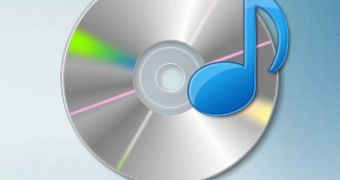From the perspective of sound quality, digital and analog signals suffer no comparison. There simply is no contest for analog. And yet the two have to coexist in today's technology all around us. Microsoft's latest Windows client makes no exception to this rule. In Windows Vista all audio content is stored digitally, and all the processes it undergoes are digital as well. But in the end, the final output phase will effectively convert the signal to analog in order to be fed into the speakers. But at the same time, Windows Vista permits end users to transmit the audio signal digitally to another device, and push back the moment of conversion to analog. Digital signals are generally safeguarded from the degradation and noise interference that affect their analog counterparts. Such a transmission is done via S/PDIF.
"S/PDIF (Sony/Philips Digital Interconnect Format) was developed. Often referred to by the name of the connector (including Toslink, RCA, or simply 'Optical' or 'Digital Out'), S/PDIF specifies a method of transmitting a digital signal so that it can be received and interpreted correctly by the connected device. You may ask yourself, 'How complicated is it to transmit a signal? Why do we need a special protocol?' Consider that the digital signal consists of a series of bits, and within that series, the bits are grouped to correspond to a sample of audio, and an even larger subset of those are grouped to correspond to a particular channel. In order to enable a receiver to properly interpret all of those bits in the correct order, it is necessary to have a format for transmitting those bits. This is where S/PDIF comes in," explained Kristin Carr, Program Manager Windows Vista Sound team.
However, S/PDIF is limited to just two channels of digital audio. This means that in real-time transmissions and with just one connection available, all transmissions over S/PDIF are restricted to just two channels. But at the same time, it is possible to transmit in excess of two channels of audio via compression. In the scenario depicted above, with a single connection and a real-time transmission compression has to kick in, in order to increase the number of audio channels. This is where Dolby Digital or DTS come into play.
"The result of this compression is that it enables you to transmit the content for up to 5.1 channels of audio over S/PDIF in space that would have only fit 2 channels if the audio had been uncompressed," Carr added. "This is great once the signal has been encoded (synonymous with compressed), but once a signal has been encoded, that same signal must also be decoded after it has been received so that it can be sent to speakers. This means that your receiver must be capable of decoding the compressed audio signal in order for you to hear the correct sound. This is the tradeoff necessary to allow you to transmit more than two channels of audio over S/PDIF."
The main issue with compressed audio is related to the fact that encoded signals can no longer be managed from a volume point of view. Compressed signals no longer permit the end user to adjust the volume from Windows Vista. Such an action can only follow the decoding of the signal.

 14 DAY TRIAL //
14 DAY TRIAL //